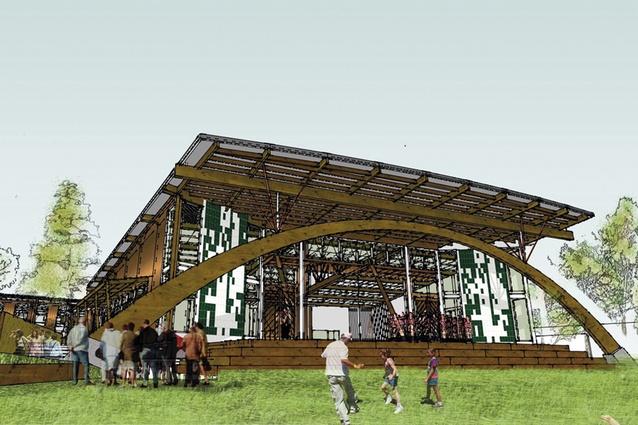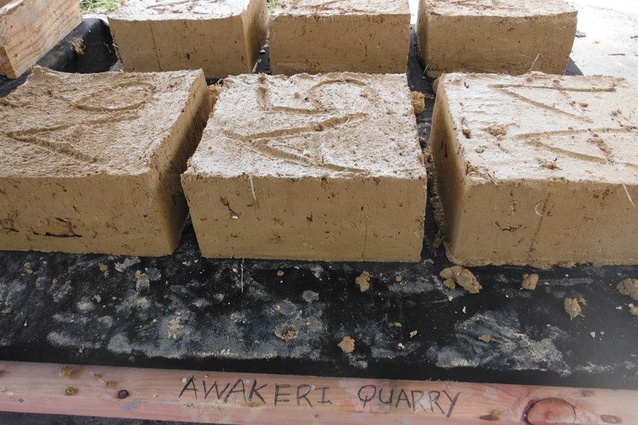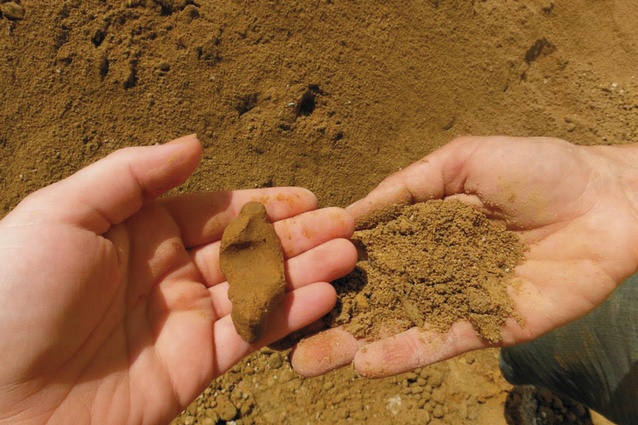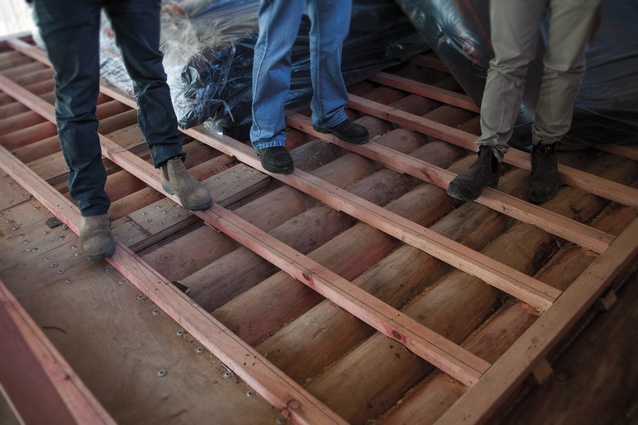Surviving New Zealand’s first Living Building
It might be the hardest job he's ever worked on; it's certainly been hard on his nerves, his family and his diplomacy skills, but for Jeff Vivian, Arrow International's project director, building New Zealand's first Living Building (LB) for Tūhoe has also been an eye-opening opportunity of a lifetime.
Before you started the build, did you have any idea what you were getting into?

No. I remember we got a call from Ivan (Mercep, the 82 year old architect from Jasmax) and he said we’ve got a project here we need you to look at. So we had a look and thought, ‘yup, looks like a great job.’ We thought the Living Building Challenge (LBC) was just another Green Star, but it’s a helluva lot more. For one, it’s an advocacy tool to create change in the industry, so you’re always pushing the boat out. Once you find a material that doesn’t comply, you have to write an advocacy letter to the company that makes it, saying, ‘you don’t comply; we believe you should be doing these things’ and there’s loads and loads of extra things like that.
Had you done anything like this before?
Nothing this technical. The design challenges themselves are unique then you’ve got everything else on top: the stringent requirements of the LBC; the seismic requirements; and a world-first timber structure. Plus everything’s on show, so everything has got to be perfect as you’re building it. It’s been an incredible challenge: we’re pulling timber out of the forests to make the timber cladding and flooring; pulling mud out of rivers to make bricks; employing locals to build it and local materials wherever and whenever we can….there’s been new companies formed because of it and we’ve got people off unemployment and into full time work because of it. So there are all these different factors to contend with. And then you’re dealing with Tuhoe, who have never done anything like this on this scale, so they need us to guide them along the way.
And all these challenges just keep coming: it’s like being in a room with a heavy weight boxer - you’re on top of him, but he just keeps punching you.
How do you know you’re doing it right: living up to the LBC and Tūhoe’s high expectations?
Trust in the team. We’ve got an amazing team, including Samantha (McGavock; Arrow’s sustainability manager), Michelle (Johansson; the Jasmax architect responsible for ensuring all materials comply with LB requirements) and Tricia Love (environmental consultant) looking at it all the time. Also knowing when to step in and ask the right questions. And there is a big tracking sheet which we use to check everything off to make sure it’s all correct. The Arrow site team - Leith Swinney and Todd Fisher - have a huge role to play in actually ensuring these tracking sheets become reality.
What about working with the cultural complexities inherent in dealing with an iwi like Tūhoe?
I’ve really enjoyed that. It’s not like working with a client who just wants their building built; this means so much to Tūhoe personally. It’s the rebirth and evolution of their tribe. They’ve made us feel a really important part of that, which has been incredible. And that feeling’s passed on to site; through us and through local Tūhoe we’ve employed, so there’s a really good feeling on site. Sometimes we’ve had the ability to increase the productivity onsite, but then someone will say, ‘well I have to come back here when I’m 90, so it’s got to be right’. That’s pretty cool. You can’t argue with it.
As it’s far tougher than a normal build, has it been more rewarding?
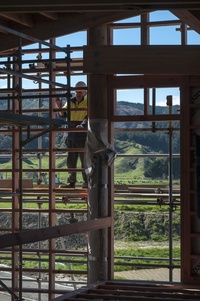
Absolutely. I’m not sure it’s really about the LBC though, so much as working with Tūhoe. It means so much to them, you don’t want to let them down.
Using as much local resource as possible, for example, is in the spirit of the LBC, but it’s Tūhoe that’s pushing it. They are spending $15 million of their own money on this, so they want to make sure as much as possible goes back to benefit their people.
Tūhoe’s and the LBC’s ethos are the same really. Tūhoe wanted a green building right from the beginning. They didn’t use the word “green,” but they made comments very early on that if they were hot, they’d open a window; if they were cold, they’d put a jumper on; they didn’t need big fancy air conditioning systems. Then Jasmax introduced them to the LBC. So really this is about Tūhoe and how Tūhoe wants to live, and it makes a lot of sense.
Has being the project director on this build changed you?
Yes, hugely. It’s made me grow a helluva lot. It’s made me focus a lot more on sustainability. It’s heightened my ability to problem solve and spot where potential issues are, because - especially with the LBC - there’s always one more bit of paper you have to go and find, or one more person you’ve got to get a tick from before you can do something. That’s just something you battle with every day.
So will you be taking what you learnt here onto other projects?
Absolutely. I think we need to learn from what we’ve done here. Everyone’s put in so much effort and so much time, from the materials to how and where things are sourced and made for example. We’ve learnt there’s a nominal cost difference between good and bad. So we should be using the good stuff as standard and, hopefully, as we buy more good stuff, the bad stuff will go away, which will benefit us all. That’s probably the simplest and biggest change we could make.
So is this the future of building in New Zealand?
It should be. But we need to get a few more under our belt and keep learning from them. It’s very intimidating taking on something like this. It’s been tough: tough on the team and I’ve got an amazing team; and tough on my family – it’s been tough having a three year old at home when you’re away so much. But the most important thing to do first is to take what we’ve learnt and apply that to the rest of the industry. Hopefully, we’ll take our lead from Tuhoe and really start making a difference in New Zealand.

